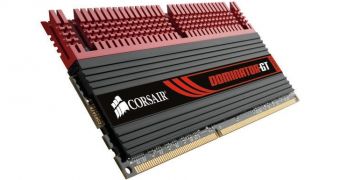Having learned that prices of DRAM increased slightly during November, some might have assumed that memory product makers would take a wait and see approach to 2013. This doesn't seem to be the case though.
Just like we speculated, the rise in price is likely a temporary thing, and while another drop might not necessarily happen in early 2013, a long-term improvement isn't likely either.
This means that consumers and businesses will continue to provide a low level of demand for memory chips, modules and kits.
Consequently, in order to keep their businesses afloat, DRAM companies will have to do the only thing they can in absence of new revenue sources: investment cuts.
Indeed, according to TrendForce, DRAM makers will reduce capital expenditure (CAPEX) for 2013 by an average 20% compared to 2012.
Capital expenditures are expenditures creating future benefits, incurred when a business spends money either to buy fixed assets or to add to the value of an existing fixed asset with a useful life extending beyond the taxable year.
Samsung was the only DRAM maker that made a profit this year, but it will still go ahead with the cut. In fact, it will cut the CAPEX by 48%.
One consequence is that the 30nm manufacturing process technology is bound to stay mainstream throughout the next 12 months.
There will be talk of 20nm and maybe 14nm too, but there will be little progress beyond the sample and prototype stages, most likely.
At this point, it is hard to say whether there will be any more bankruptcies in the random access memory industry segment.
The CAPEX cut will help buoy businesses, financially, but it might take even tighter supply control strategies to ensure no more total collapses happen. By all accounts, trying to charm prospective buyers with extra heatsink colors hasn't really helped much.

 14 DAY TRIAL //
14 DAY TRIAL //